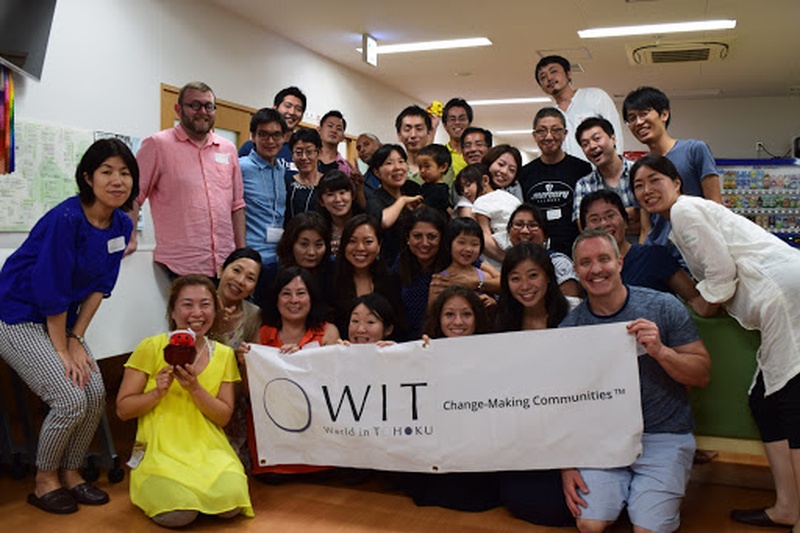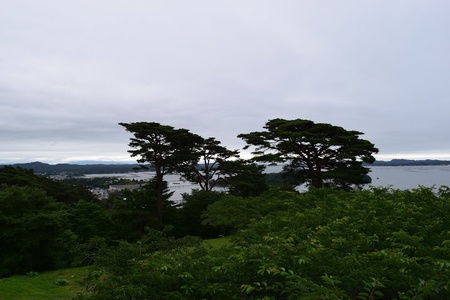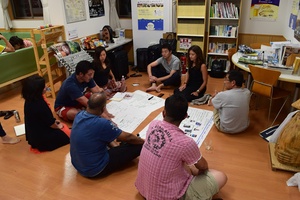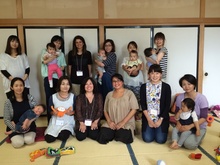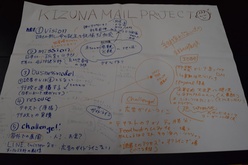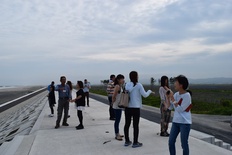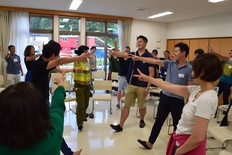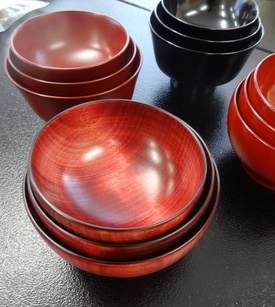I’ve just returned from an eye-opening odyssey to the Tohoku region of Japan with the non-profit social entrepreneurship organization World in Tohoku (WIT). Through WIT I was able to meet some of the people behind the dynamic social ventures formed in the wake of the March 2011 earthquake, tsunami, and nuclear disaster and learn how they are trying to improve social, environmental, and living conditions in the region.
Located in the northeastern part of Japan, Tohoku is a beautiful region filled with awe-inspiring bays and coastal coves, forests, deep-green mountains and fields, amazing seafood, and warm-hearted people. They’ll tell you how 3.11 affected them if you ask, but otherwise have a cheerfulness and openness about them that belies their experiences of loss and hardship. I’m thankful to WIT for allowing me to go below the deceptively placid surface of the region to see the struggles to rebuild that are underway.
World in Tohoku was launched after the Great East Japan Earthquake in 2011 by Mio Yamamoto, who has a background in venture philanthropy and degrees from MIT’s Sloan School of Management and Tokyo University. Although WIT has held a number of “learning journeys” to connect expert advisors with Tohoku social ventures, this was the first international collaboration.
Our “cross-border Learning Journey” introduced nine Tohoku social ventures (five new to WIT’s portfolio this year) with 10 U.S. participants and 10 Japanese participants. All of us were surprised at the depth of the collaborations that resulted from the week-long journey, and the strong bonds that were formed. The range of expertise Mio-san and her two-person part-time staff collected was impressive, too, spanning the fields of finance, fundraising, investment, entrepreneurship, arts and design, urban planning and sustainability, law, and international development.
The social ventures we visited and collaborated with included two pre- and post-natal support organizations for mothers and families in Tohoku, a much needed service considering that stress levels were so high in the wake of the disaster that incidences of child abuse were reported. Another, Asuiku, provides safe learning spaces and e-learning for poor and at-risk youths.
To our surprise, we learned that poverty was a hidden fact of life in Tohoku before 3.11. “The disaster simply revealed the poverty,” said Yusuke Ohashi, Asuiku’s founder and director. In fact, childhood poverty in Japan is the fourth highest in the 35 OECD member countries, after Mexico, the U.S., and the U.K.
Another social venture, the Watari Greenbelt Project, is dedicated to re-growing trees in the 2.5-mile long coastal area of Miyagi Prefecture, where a 400-year-old forest was destroyed by the tsunami. The staff from Replus captured the hearts of all of us for their dedication to providing caregiving, training, and education to people of all ages who are still suffering the physical and emotional toll of living in shelters and temporary housing.
Two other ventures that generated much interest were Wataru Kainuma’s Meiten, which aims to bring back the traditional craft of lacquerware in Aizu Wakamatsu, Fukushima, and World Chodoii Lab (World Just Right Lab) in Matsushima, Miyagi Prefecture. Kainuma-san told us that only two percent of lacquerware purchased in Japan is made in the country today—the rest, cheaper takes on the real thing, is imported from China.
World Chodoii Lab grew out of founder Shinichi Chiba’s own experience as a fifth-generation owner of several cafes, a well-known cake shop, and a gift store in the beautiful coastal town of Matsushima. It’s more of a design concept and philosophy, a sort of return to the “small is beautiful” idea of E.F. Schumacher. “After the tsunami,” Chiba-san told us, “I thought, ‘Why keeping making things we don’t need?’” The Chodoii model shuns growth for growth’s sake and holds that “good is better than big” and “happy is better than rich.” Amen to that!
This is just a quick summary of the WIT Learning Journey, which I will be writing more about, so stay tuned.
Read “In Minamisanriku, surveying the aftermath of the 2011 Great East Japan Earthquake” >>
* This article was originally published on the author's blog, Walking and Talking, on July 25, 2016.
© 2016 Nancy Matsumoto


